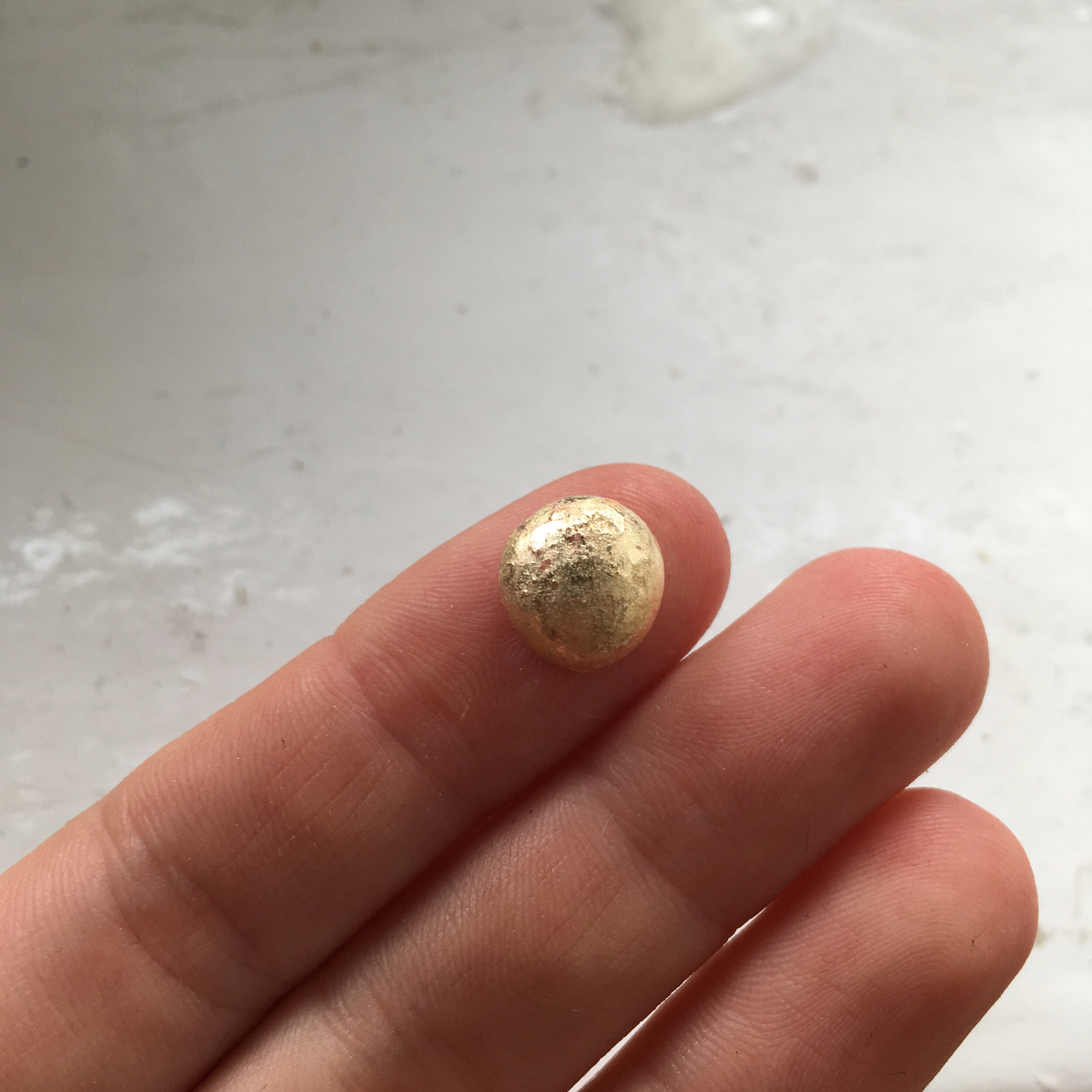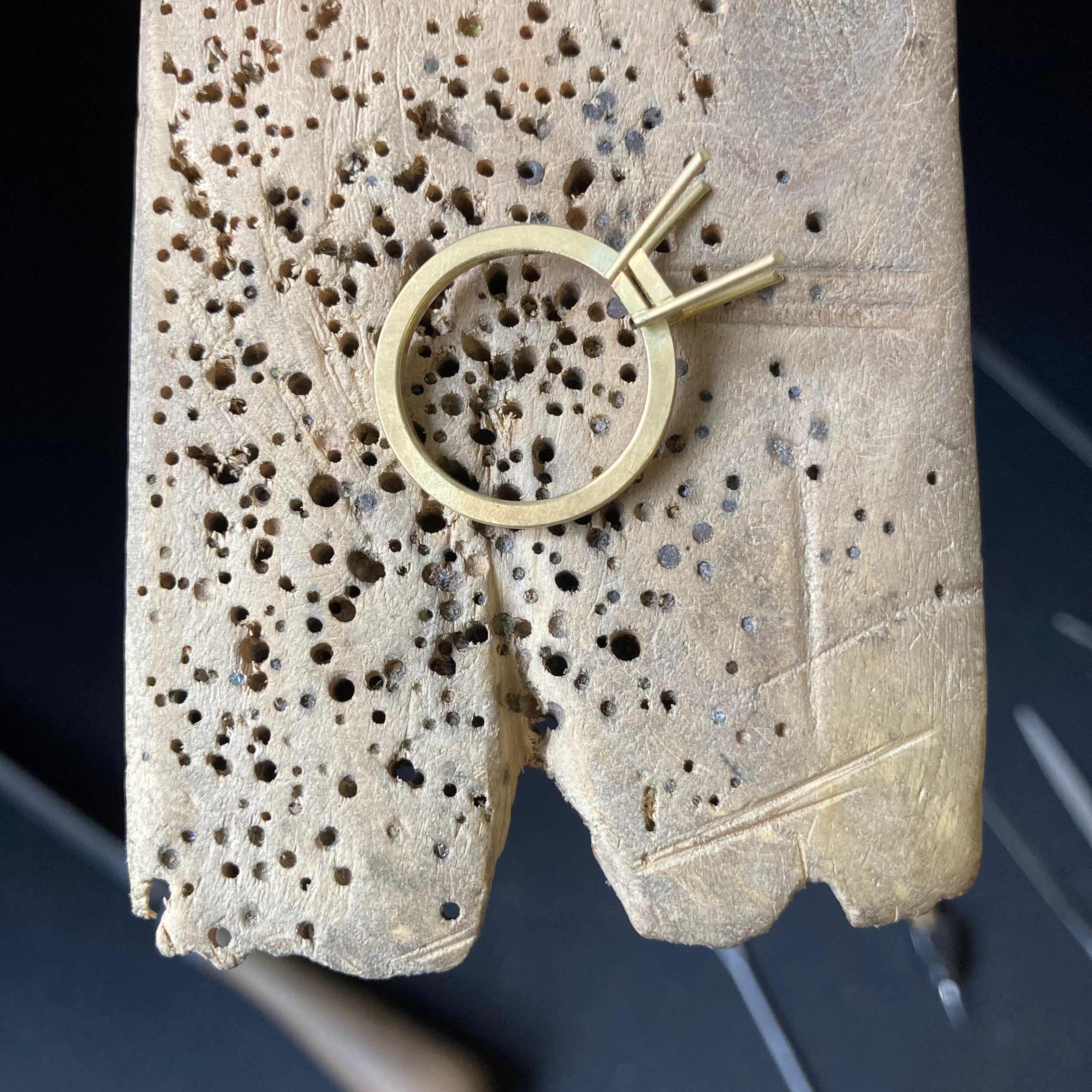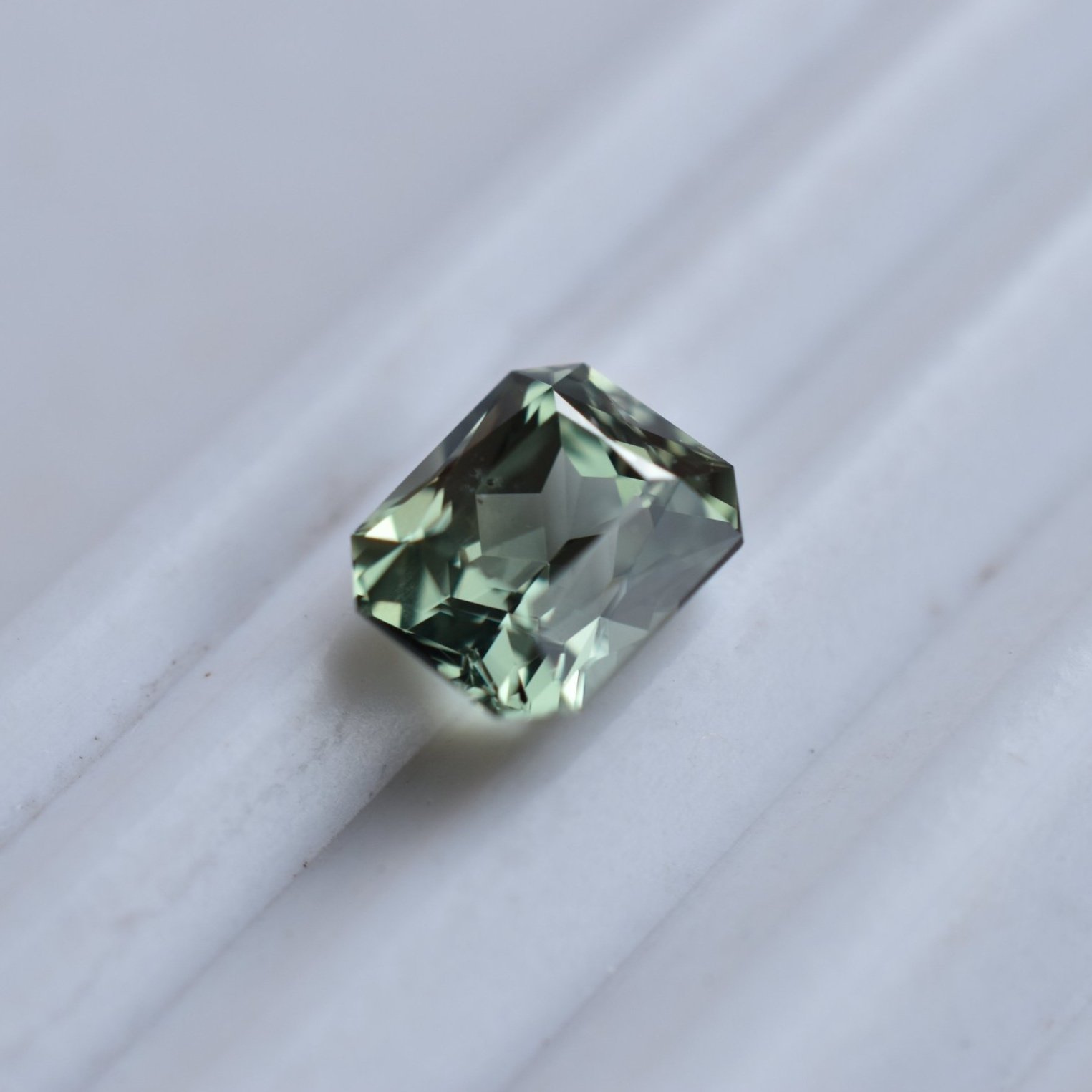Process
My work celebrates quality in craft through a contemporary perspective. Traditional goldsmithing techniques that have been passed along for centuries are behind each piece I make in my London studio. The result is timeless yet inventive fine jewellery that is made to be enjoyed for many years.
I use hand fabrication methods that focus on durability, and build each piece in a way that creates the highest quality finished product. Metals are drawn into wire, rolled into sheet, and forged into shape, increasing density and strength as well as giving the metal an internal grain. This process ensures that each tiny component is carefully considered, and that no detail is overlooked. Though rare in my studio, every once in a while carving in wax and casting will be the best method for a particular design. In these cases, I will hand carve the piece in jewellers wax and then cast it in the chosen metal.
These methods also imbue each piece with a subtle warmth and individual character, and mean that no two pieces are ever exactly alike. Hand fabrication facilitates my inquisitive nature in the studio, allowing me to continually experiment with various techniques and materials. I welcome the possibility for chance, seeing it as an essential component for discovery and unique outcomes.
Material Sourcing
An appreciation and respect for the places these materials come from and the many hands they travel through is central to my practice. In sourcing my materials, I work to support initiatives that provide meaningful impact and active improvements throughout supply chains.
I work with Fairmined and SMO (Single Mine Origin) gold. I am also a registered Fairtrade Goldsmith and can use Fairtrade gold upon request. These initiatives work toward essential, long term changes in mining, an industry which requires attention and which unfortunately is not reduced or impacted by the use of recycled gold. Through audited systems and by working collaboratively with miners and mining communities, they ensure fair pay to miners, environmental protections, and labour and safety standards. It is vital that these standards continue to develop and expand across the industry, both in large scale and artisanal mining.
Gemstones and diamonds are sourced in a way that addresses the different factors around each type. I focus on traceability in order to assess and support responsible practices throughout supply chains, while also acknowledging and being transparent with my customers about where complexities and limitations are currently. I prefer to work with small suppliers and individual gem cutters who have their own direct connections and strong relationships with miners, brokers, and source communities.
While not always possible, the gemstones and diamonds I use can often be traced back to their source, whether that be in Australia, Madagascar, Colombia, Canada, or Tanzania. Some of the suppliers I work with are Nineteen48, Moyo Gems, Inspira Diamonds (Origin Australia), Capricorn Gems, and Peter Torraca.
I also work with customer’s heirloom gemstones and diamonds, incorporating them into bespoke pieces whenever applicable.
How I Choose Materials
Metals:
My favourite metal to work with is gold. Its unique characteristics make it a metal that allows infinite experimentation. One of the 118 known chemical elements, pure gold (Au) is one of the densest metals, cannot corrode, and is incredibly malleable. Because it is a naturally soft metal, pure gold is often alloyed with other metals to make it more suitable for wear. Gold is available in various alloys, such as 14k, 18k, 22k, yellow gold, white gold, or even green gold. 18k yellow gold is most frequently used in my work. Aside from gold, I also work with fine silver, sterling silver, copper, and bronze. At the moment, I do not work with platinum.
Stones:
After working as a goldsmith for over a decade and seeing countless gemstones and diamonds, I choose high quality stones that stand out and capture my attention because of a striking or unique feature. I can be drawn in by a painterly pattern of natural inclusions in a gem, the beautiful finish of a cut, or an unusual colour. Unless they are genuinely relevant in regards to durability and longevity, I am not so interested in conventional commercial values, and am more interested in finding stones that display a strong balance of uniqueness alongside quality.
Cut and polish is of such importance because stones are often cut for speed and size over quality, and it shows. A well cut stone on the other hand makes all the difference to the final look and feel and will bring a stone to life.
These stones are often millions, if not billions, of years old, and go through many stages in their formation and to be brought from the ground into a piece of jewellery. Treating the material carefully and with respect acknowledges the long history and natural preciousness of it, and I appreciate when I find a stone that has clearly been handled with consideration. My collection is made up of stones that have had minimal or no treatment, and where the lapidary artist has allowed the natural shape and features of the stone to guide the process.
Above image by Sophie Davidson








